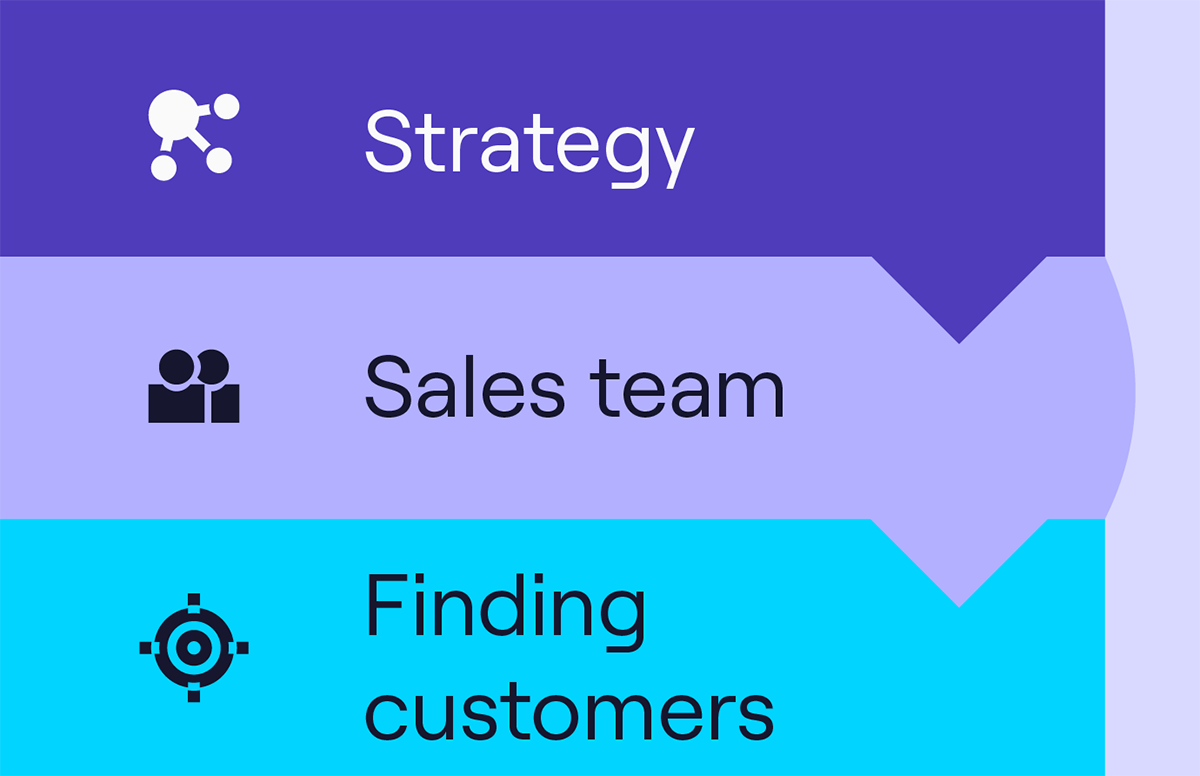Building Your Outbound Sales Team: From Hire 1 To Hire 100+
Rome wasn’t built in a day.
And neither is your outbound sales team.
Sales leaders can’t just work with an approach and hope for the best.
Instead, it’s essential to be patient and experiment. These are the core values needed for creating processes that are scalable and repeatable.
And yes, we understand there are looming revenue numbers. And pressures to accelerate.
But the truth is that if sales leaders don’t put in the effort to test and figure out what works, scaling a team for success isn’t going to be the end result.
In this article, we’ll share the fundamentals you need for growing an outbound function from scratch, versus a team that you’ve already got.
We’ve featured insights from:
- Ashleigh Early, CEO of Other Side of Sales and Trainer with WinningByDesign.
- Gabrielle Blackwell, SDR Manager at Airtable.
- Ryan Reisert.
Scroll for more.👇
Building a team from scratch vs scaling for the next level: the importance of understanding the difference
Depending on what stage of growth the team is at, sales leaders need to understand what to prioritise.
Because in the long run, it’ll help set the team up for success.
Especially because the nature of outbound is challenging.
Gabrielle explained why:
“What I’ve seen thus far when it comes to outbound, is that it’s probably going to take at least a year to actually reap the benefits of it. It’s not a matter of ‘Oh, we won’t get revenue next quarter.’ It’s that you aren’t going to get it for a year.”
And why is this the case?
“Typically, when it comes to outbound, you’re reaching out to folks who are unaware of their problems, and potentially uneducated about solutions in the market. Or, they’re unaware of your brand, and they already have a solution in place.”
So, what ends up happening?
“You end up fighting with the status quo. It takes a long time to educate someone about their problems. And from the prospect’s side, they have to plan and find a budget. And even getting in contact with people in the first place is difficult.”
What’s clear is that outbound teams need scalable and repeatable processes to succeed...
In summary, it’s essential to get things right from the start.
What should sales leaders bear in mind when building an outbound team from the beginning?
Part 1 of the bonfire analogy
Here’s the truth.
Nothing’s going to go to plan on the first try.
Ashleigh shared more:
“The reality is if it’s truly your first six months of full-time outbound, you’re going to mess up every single step. Every conversion rate, every email, every voicemail script. It’s not going to be where you think it is. Because nobody does it perfectly on the first shot.”
So, what’s the solution?
Ashleigh shared a useful analogy of building a fire, to help sales leaders think about how to build the team from the ground up. 🔥
“To start with, it’s actually better to do a pilot. Get three or four reps, and focus on helping them get what they need to get a couple of plays in place. Once you have that, then go start the fire.”
SaaS sales recruiters for software startups can help you make those first few crucial hires.
She added:
“Everyone wants a big beach-filled bonfire. But you don’t get there by building a giant fire and throwing a match. You’ve got a bunch of logs that have become wet in the rain. You’ve assembled and built the thing, but nothing’s happening.”
“Instead, you need to build a pilot fire. Think of it as a little bit of kindling and some friction, to make a spark. Start there first.”
“You’ve got to have this mindset if you’re building an outbound team from scratch. Start with a pilot, get something proven, and then double up. Keep repeating this until you get to a point where things are all working together.”
Start small with targeting
Ashleigh said this is crucial to early success with outbound.
“There’s a common view that: ‘Everyone can use our product, so just outbound and get us business.’ But the problem with this approach is that you’re not going to learn anything. And if you can’t guarantee success, you can’t guarantee learning.”
She added:
“A lot of the time, people will say: ‘Great! You’ve got every company between 500 and 10,000 in Indiana. Go and do some outbound.’ That rep can probably go and make a killing. But it’s not going to help grow the team as a whole.”
“That’s because you haven’t got any best practices, and there’s no scalability. If you throw another rep in a different territory, you’re going to have completely different results.”
Ashleigh continued:
“When it comes to targeting, run very specific experiments. For example, the first two BDRs and AE should go after this specific vertical, with companies from this size to this size. Do that for two weeks, and then you can run another experiment. It can be similar, slightly different, or completely different.”
“The key is to run these smaller experiments long enough so that you can figure out what’s working and what’s not for that group. This is how you’ll be able to eventually rinse and repeat. When you’re starting out, it’s super important to be intentional. And don’t add too many layers until you’ve got a few plays to build on.”
Gabrielle agreed:
“You need to ensure you are warming and nurturing the market in the right way. You’re going to end up selling to the wrong people in the process too. But at the core of it, you’re going to have to learn a lot.”
What should sales leaders consider when taking their outbound team to the next level of growth?
It’s not always about increasing headcount
For leaders looking to level up their outbound team, let’s debunk a common sales myth. Adding headcount isn’t always going to help.
Ryan explained why:
“More often than not, making adjustments to process or adding new tech can help you get to that next stage of growth, without having to add more people. There’s a saying that if you want to double sales, you should double your headcount. But think about the efficiencies you can gain from the team now.”
He added:
“Understand your numbers (conversations, meetings etc.) to inform what exactly needs to be scaled. Adding a bunch of people before process and technology creates a whole lot of havoc. And because systems and approaches aren’t consistent, it just creates noise.”
Part 2 of the bonfire analogy
Ashleigh said:
“This is the point where you’re going to put some lighter fluid on the fire. But if you haven’t got enough wood, it’s going to go out.”
And what does this mean with regard to sales leaders and their outbound functions?
“At this stage, it’s important to have a codified system. And you’ve got to make sure you have the right systems and structures in place. And not just from a tooling and a lead flow perspective, but from a coaching perspective. More specifically, investing in management is vital.”
Ashleigh expanded on this:
“The number one reason why sales reps leave companies is because of bad managers.”
“So, as the leader of outbound, get your managers training. Make sure they know how to coach. Ask them if there’s a system in place. And Gong alone doesn’t count. Your managers need to be able to give feedback and ask questions in a way that gets reps learning.”
And there’s a risk of a negative domino effect if managers aren’t trained well. Ashleigh continued:
“You risk there being a case of reps saying ‘Oh gosh! I’ve got to go and fix all of these things, and my manager hates me!’And when you’re trying to scale you’re going to find that you’re dealing with a lot of layoffs.”
“Invest in your managers and manager training before you accelerate. And make sure that you - the sales leader, look to these managers when you’re scaling. Because they’ll tell you exactly what they need from you.”
Press play below for more tips to effectively coach SDRs. ▶️
Closing thoughts
One key takeaway for sales leaders is that you need a lot of patience to grow an outbound team.
If it’s your first time building an outbound team, you might feel overwhelmed.
But don’t worry!
Ashleigh had some words of wisdom to share, that’ll get you started:
“Use the experiments as an opportunity to gather knowledge. Find out what works and what doesn’t. You’ll learn a lot, and then you’ll be able to build something that is scalable. And it’ll be successful because it’s built on facts rather than assumptions.”
Get more sales insights
If you’re interested in more, sign up for the Sales Digest to get insights sent to your inbox bi-weekly.
.png?width=689&height=265&name=sales-leader-digest%20(1).png)


